Existing User Log In
New User Registration
Register for a free account to gain full access to the VGChartz Network and join our thriving community.



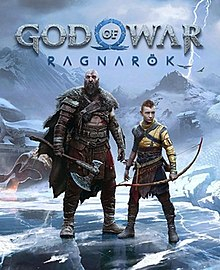

America - Front
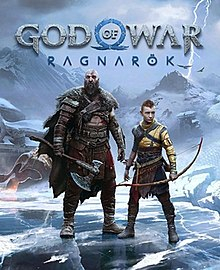

America - Back

Sony Computer Entertainment
Action
 11/09/22 Sony Computer Entertainment
11/09/22 Sony Computer Entertainment  (Add Date)
(Add Date) 11/09/22 Sony Computer Entertainment
11/09/22 Sony Computer Entertainment
| Owners: | 2 | |
| Favorite: | 1 | |
| Tracked: | 0 | |
| Wishlist: | 0 | |
| Now Playing: | 1 | |
2018’s God of War is a game that, four years later, I’m still somewhat conflicted about. On one hand, it was a significant step forward in character writing and storytelling for the series, which narratively felt like it had largely run its course even before Ascension, and carried some incredible presentation and artistic direction to boot. On the other, it felt like it sacrificed much of the series’ unique appeal to achieve that, with combat being treated as a secondary and maybe even tertiary concern to the game’s narrative ambitions. Now its sequel, Ragnarök, is here and attempts to retool some of the moment-to-moment gameplay while keeping its predecessor’s grander storytelling designs intact. How well does it deliver?
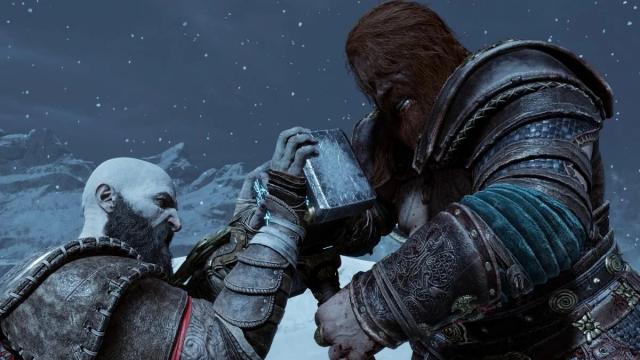
The story for Ragnarök picks up from the previous title’s cliffhanger. Several years after the conclusion of Dad of Boy I, Fimbulwinter has set in, and everyone is rightfully spooked about the incoming apocalypse of Ragnarök. It’s tough to provide any more details without delving into significant spoilers, but Kratos and Atreus wind up adventuring throughout the various realms of Norse mythology while struggling with their responsibilities towards others and their relationship with each other.
Nearly every aspect of Ragnarök seems designed predominantly to bring the story into focus, so let’s focus on how they do that before jumping into other aspects. For starters, God of War: Ragnarök looks gorgeous, and at the time of writing, may be the prettiest “realistic-looking” game I have ever played. The voice acting and direction remains exceptional, with Christopher Judge putting on another fantastic performance, but I’d honestly argue that even he is overshadowed by Ryan Hurst’s efforts as Thor. Other characters such as Odin, Atreus, Freya, and a few other, more spoilery individuals also boast incredible voice work.
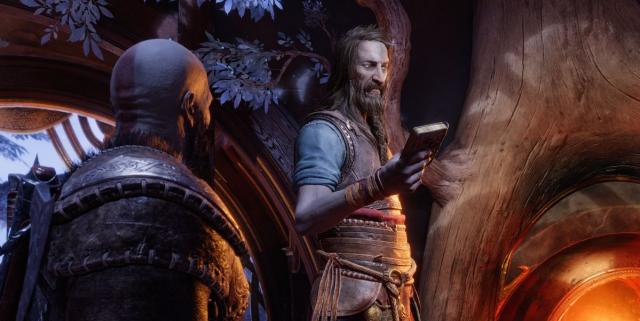
The presentation of Ragnarök remains impeccable in terms of camerawork as well. Framing a game as a single shot is an exceptionally difficult task, and like its predecessor, it’s often put to great effect when the camera dramatically swings from one character to the next in the middle of action cinematics. That said, I have to wonder if the team at Sony Santa Monica might be too dedicated to this philosophy. While I do think the game’s presentation benefits probably more than 95% of the time from this design choice, there are a few moments that I feel like could have been highlighted even more with cuts. But this is a minor nitpick, and even on the PS4 Ragnarök is an absolute visual treat, with superb environmental and character design.
Gameplay also contributes to building the story quite nicely. There are a few genuinely clever moments that really demonstrate a desire to merge gameplay and narrative, but they’re hampered by some inconsistent implementation. One example of this comes from a very early boss encounter where Ragnarök subverts its own fail state. The player is given a prompt to mash a button, but in reality it’s an unwinnable QTE that results in Kratos “dying” and the screen switching to the standard view that appears after a game over, before the boss declares the fight isn’t over and uses their powers to revive Kratos and keep the battle going. It’s a very effective idea, and other, more spoilery examples do a lot to blur the line between interactive and non-interactive components.
That said, some odd decisions to try and make certain story elements more interactive do feel a little silly. “Press F to pay respects” garnered widespread mockery, and rightfully so, but swipe right on the touchpad to prepare for a funeral isn’t much better, especially given the poignancy of the scene where it takes place. A few other elements also feel a tad misplaced; I can generally respect the desire to merge gameplay and story, but some moments just can’t be improved with player control.
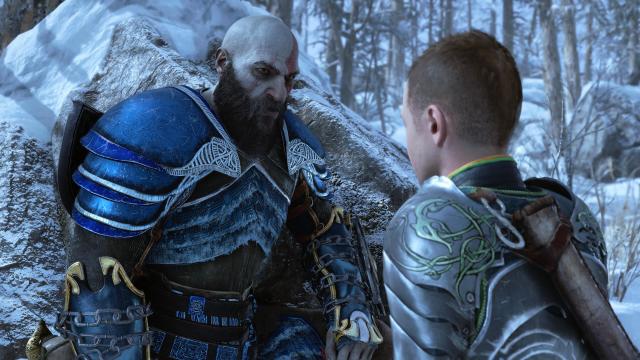
The narrative itself deserves special mention for being very potent. I might upset a few purists in saying this, but it does feel genuinely impressive how much of an arc they’ve been able to craft for Kratos. Even by the end of Dad of Boy I was a bit skeptical of the idea that Kratos had now become a family man who genuinely shows compassion for anything that is a mild inconvenience to him, but Ragnarök provides a genuinely believable and enjoyable conclusion to a character arc that really feels like it’s come full circle.
Atreus also really comes into his own as a character. His arc in the previous title felt rather dramatic and sudden, so it’s good to see him get a good chunk of screentime that really fleshes out his own motivations and separates him as his own person. The ending of God of War: Ragnarök and the presumed resolution to his character deserves special mention; I was surprised how much I had enjoyed Atreus by game’s end.
Combat is still at the center of the gameplay for these titles, though, and it deserves its own deep dive. The original was somewhat unfocused in this regard, with a number of its more experimental elements hampering moment-to-moment battles. To Santa Monica’s credit, a number of these have received some sort of fix. Enemies now dash horizontally far less, causing lock-on to break less frequently. Higher difficulties are now much more interesting and fun to play, as increased difficulty is accomplished in more interesting ways than just buffing enemy health to absurd degrees.
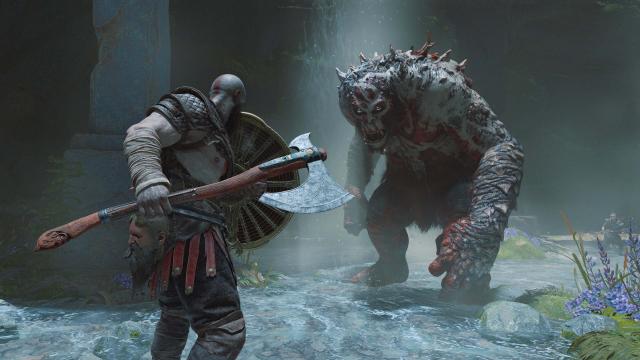
Unfortunately, many problems remain unaddressed. By far the biggest is the zoomed-in nature of the camera, which generates a host of problems and exacerbates others. Surveying the battlefield is a chore in its own right, and frequently results in the player being left uncertain where enemies are and when they will attack up until the very last second. The rather slapdash solution of placing yellow and red arrows for enemies/incoming attacks behind Kratos is both visually off-putting and rather imprecise, doing nothing to communicate what type of enemy or attack is approaching. The player’s ability to make plans and control space is significantly hampered as a result, which leaves encounters with multiple enemies feeling less like an experienced warrior skilfully dispatching his foes, and more like baby-sitting a group of unruly children, trying desperately to keep everything in front of you.
Compounding this is that both player and enemy attacks will often “magnetize” towards the nearest opponent and player character, respectively. Not only does this look ridiculous, but it introduces a heightened degree of inconsistency on both ends. For player attacks, it causes basic inputs in crowds to become unreliable, as Kratos may choose to attack an entirely separate opponent to the intended target due to no fault of the player. For enemy attacks, it makes careful positioning effectively impossible since you can never quite be sure if the game will cause the enemy to disco slide towards you or not. Again, more inconsistency, and a continued sense that the player is having to consistently account for the shortcomings and unpredictabilities of the combat system rather than pushing it to its fullest potential.
Other issues remain prevalent as well. Runic attacks continue to work on cooldowns, which encourages slow, defensive play rather than jumping into the fray. This, paired with the aforementioned camera issues, often makes falling back and playing cautiously the ideal strategy, especially when multiple opponents are around, which is unfortunate as the combat is at its best when Kratos is up close and personal. The RPG mechanics give a sense of progression, but come at the cost of consistency within combat, making attacks affect enemies in unpredictable ways. On Give Me No Mercy, leveling up the power of the Leviathan Axe once is the difference between a certain Level 3 enemy type having their attack animations armor through Kratos’ basic light attacks and being interrupted. These problems are less prevalent with small encounters or the wide selection of one-on-one boss fights, but for the majority of encounters it feels like Ragnarök's design is often at odds with itself, creating a combat system that is most enjoyable when the player is fairly aggressive but designing systems that seem to discourage it.
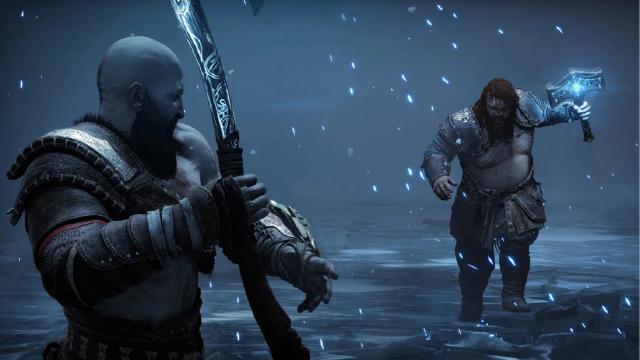
In-game dialogue also seems to reflect this idea of design choices conflicting with each other. Like its predecessor, Ragnarök has a sizable emphasis on environmental puzzles, but despite the inclusion of these challenges it rarely seems willing to trust the player to solve them. Take more than 15 or so seconds to solve a puzzle and a character will chime in to provide a significant hint, and in some cases flat out tell you the solution. Sometimes they won't even wait that long; on several instances I received a hint just as I entered the room or climbed the ledge where the puzzle was present. This extends to status effects too; characters will inform you that you are on fire or poisoned, despite the presence of obvious visual indicators. There’s no way to disable this sort of commentary, either, which makes the experience feel rather heavy-handed, as if the player is constantly being instructed on what to do, and it feels like a very curious inclusion to even have these observational elements if the player will not be trusted to even notice them, let alone address them. It's kind of a bizarre contrast between the gameplay ostensibly designed to make you feel like a God of War, but the much of the design philosophy treating the player like a hapless child.
Perhaps the initial response might be that none of this matters, as the new God of Wars are setting themselves up to be titles more about creating a certain experience rather than challenging the player to master a set of core mechanics, but I feel like that sells the idea of experiential titles short. Even very mechanically simplistic titles that are designed almost exclusively around atmosphere-building, like Spiritfarer and Return of the Obra Dinn, still trust the player to be able to identify basic environmental clues. One might argue that that trust is, in fact, what makes the experience for these titles; neither of them would likely be anywhere near as satisfying if the solutions were consistently handed to the player.
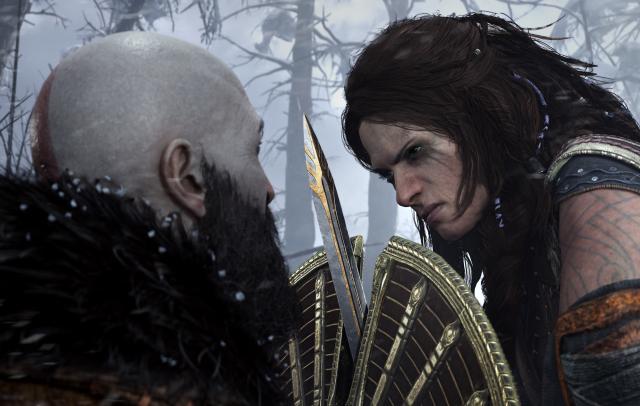
In summary, God of War: Ragnarök feels like a ride at an amusement park. Despite the openness of the world and the ability to branch out for side quests, it never feels like Santa Monica is quite willing to fully take its hands off the steering wheel and let the player drive. The end result is a title that feels like it wants to incorporate a variety of gameplay elements, but is unwilling to expand on them in meaningful ways. As a result, all we’re left with is an admittedly very well-told story and some crunchy combat animations. Perhaps that’s enough to carry the game for some, but this feels like settling for far too little; this is a series that had combat with a solid amount of depth yet still managed to tell stories that, at the time, were widely considered the height of video game storytelling. Ragnarök’s fantastic narrative and enjoyable characters ensure that it isn’t getting out of here without a recommendation, but its gameplay shortcomings mean that it ultimately falls short of some of its loftier ambitions.









